These activities are great for introducing children to the concept of capacity and volume in a fun, hands-on manner. I used lots of different size and shape beakers, pipettes and syringes to help my daughter learn how to read different scales as she had previously assumed that each bar was always either an increase of 10 or 1.
What is capacity?
Capacity is how much space there is available to hold something.
For example the capacity of a jug could be how much water it holds.
Capacity is usually measured by reading from a scale using metric units, for example litre or millilitre.
There are 1000ml in a litre.
What is volume?
Volume is a measure of the space taken up by something.
For example this jug has a capacity of 1 litre, but the volume of water in the jug is only 600ml.
1. Fizzy Potion
Children can follow our easy fizzy potion recipe sheet, choosing the best tool for measuring each ingredient, or design their own recipe.
2. Make a lava lamp
I split this activity into 3. First we worked out the capacity of our container by filling it with water, then poured the water into a measuring jug to calculate how much water was needed.
Next we calculated the amount of water and oil needed ( ⅓ water and ⅔ oil ).
Last of all we added food colouring and an alka seltzer.
Materials
- Water
- Vegetable Oil
- Alka Seltzer
- Food Colouring
- Container
- Measuring jug
Method
- Calculate the capacity in ml or litres of your container, by filling it with water and then measuring the volume of the water.
- We need to fill the container about ⅓ full of water and ⅔ of oil. Work out how much water and oil you need.
- Pour the water first and then the oil, the two should separate.
- Add a few drops of food colouring.
- Drop an an alka seltzer tablet into the container and watch your lava lamp bubble away.
3. Density experiment
Materials
- Measuring cylinder
- Water
- Oil
- Golden syrup
- Milk
Method
This time we are going to add different volumes of liquids to a measuring cylinder until it reaches capacity.
The capacity of my measuring cylinder is 100ml ( on the scale – it actually holds a bit more ).
I am going to fill it using 4 different liquids, so 25ml each.
The most dense liquid needs to go on the bottom so the order should be golden syrup, milk, water, oil.
Suitable for Key Stage 1 Maths
Measure and begin to record capacity and volume
Sequence events in chronological order using appropriate language
Contains affiliate links
Last Updated on May 2, 2016 by Emma Vanstone

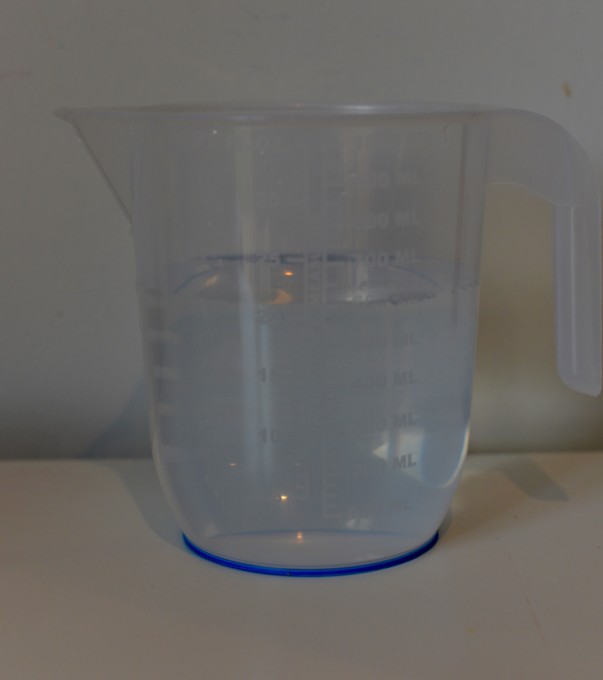
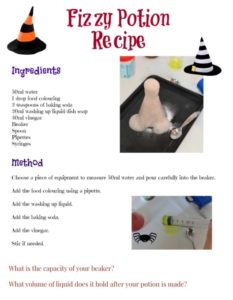
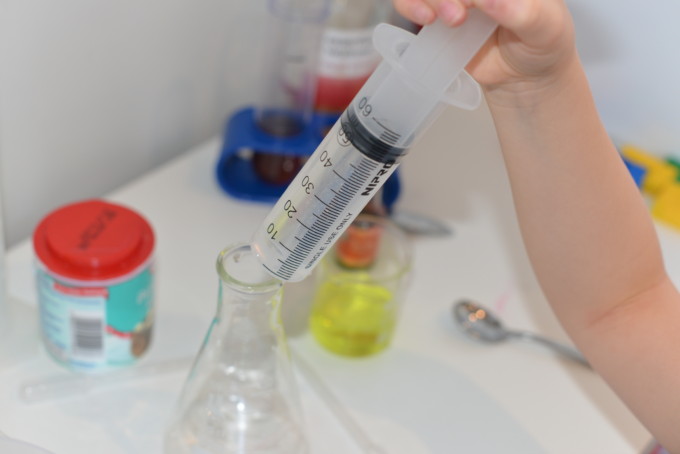
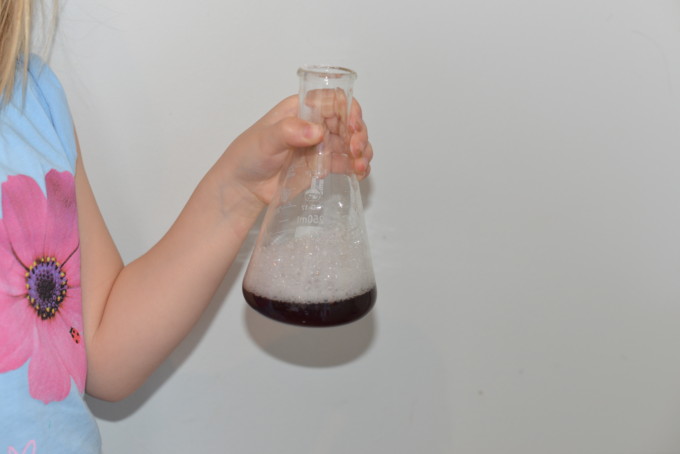
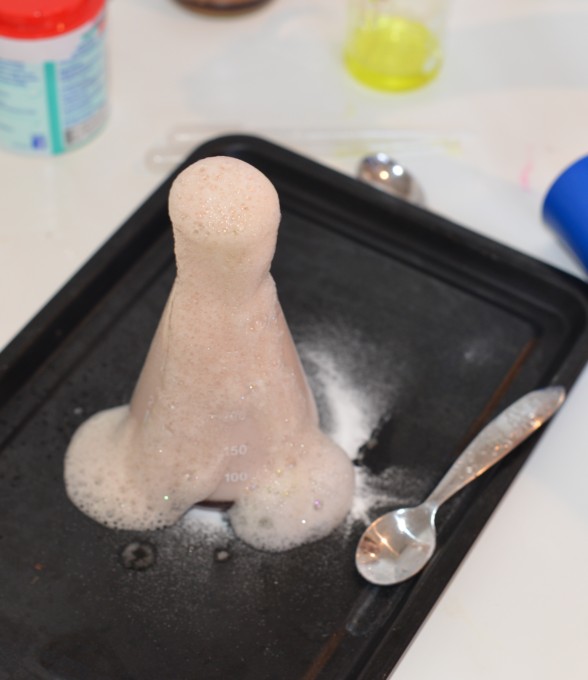
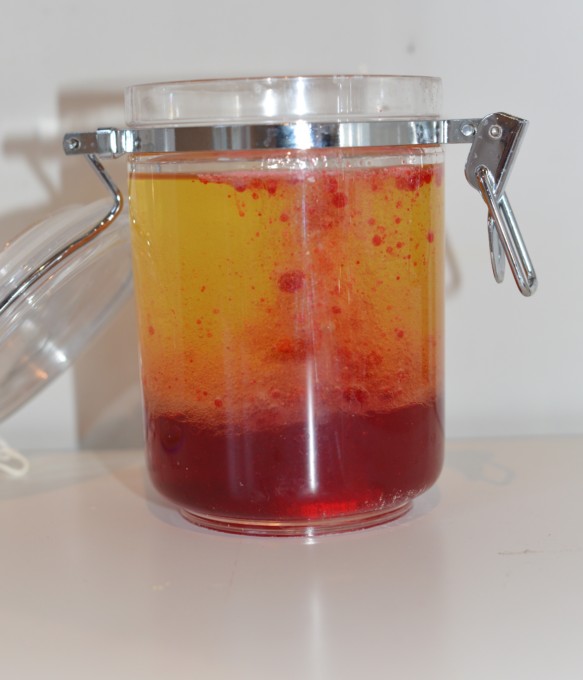
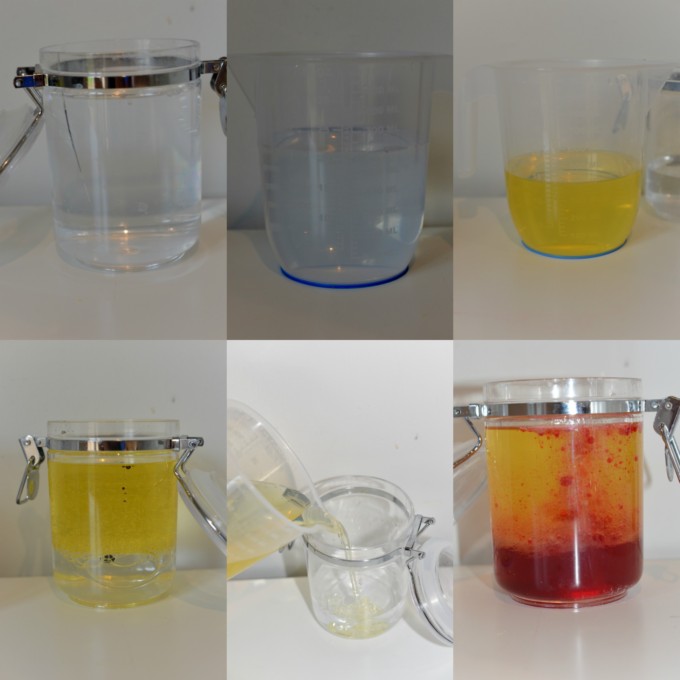
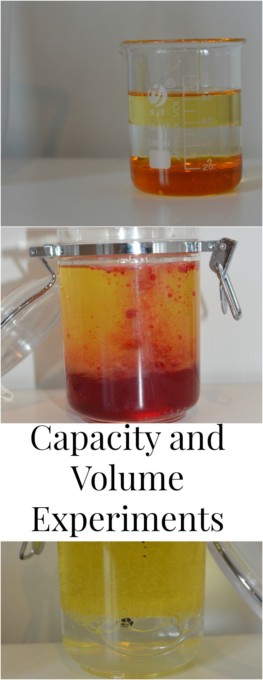
Leave a Reply